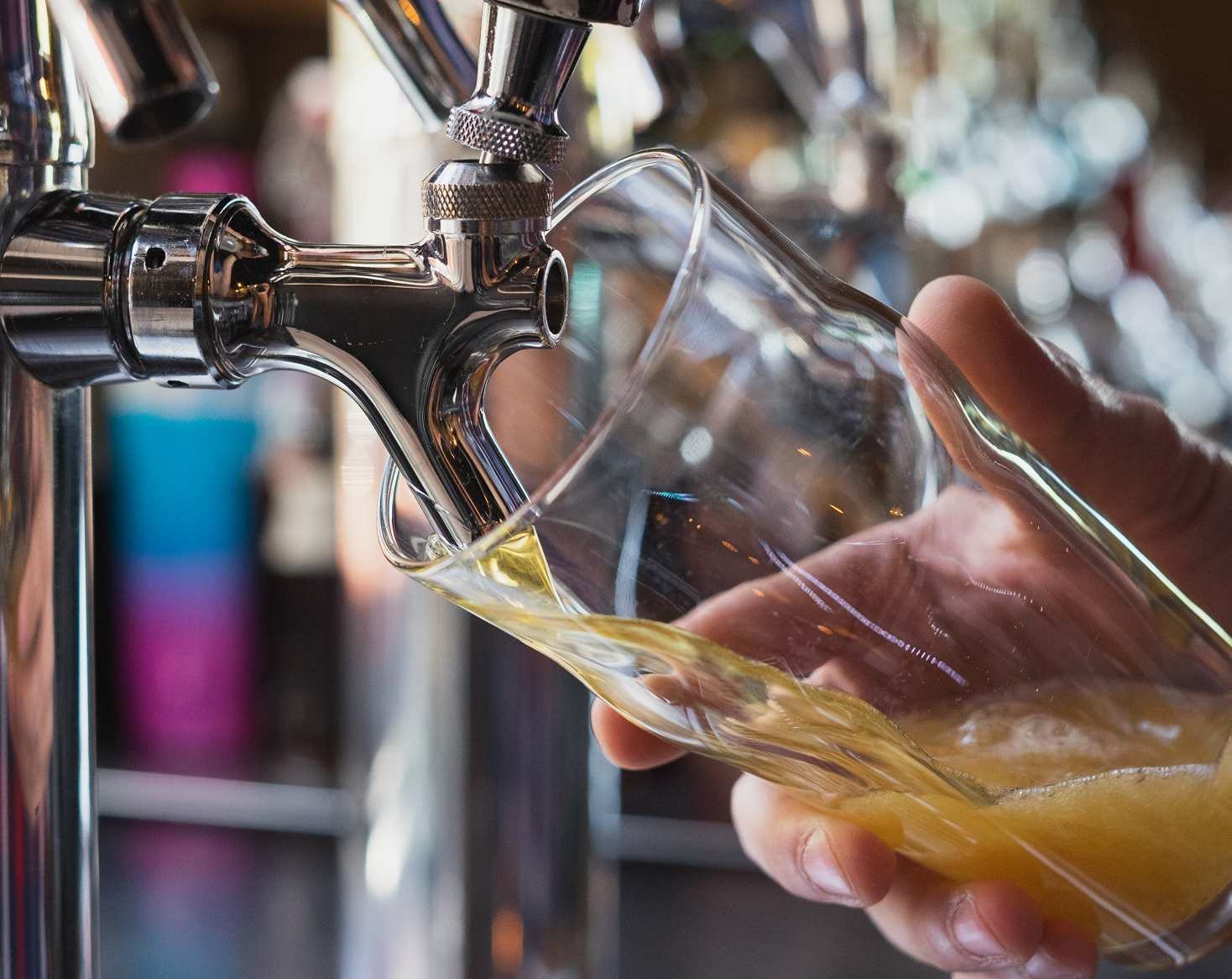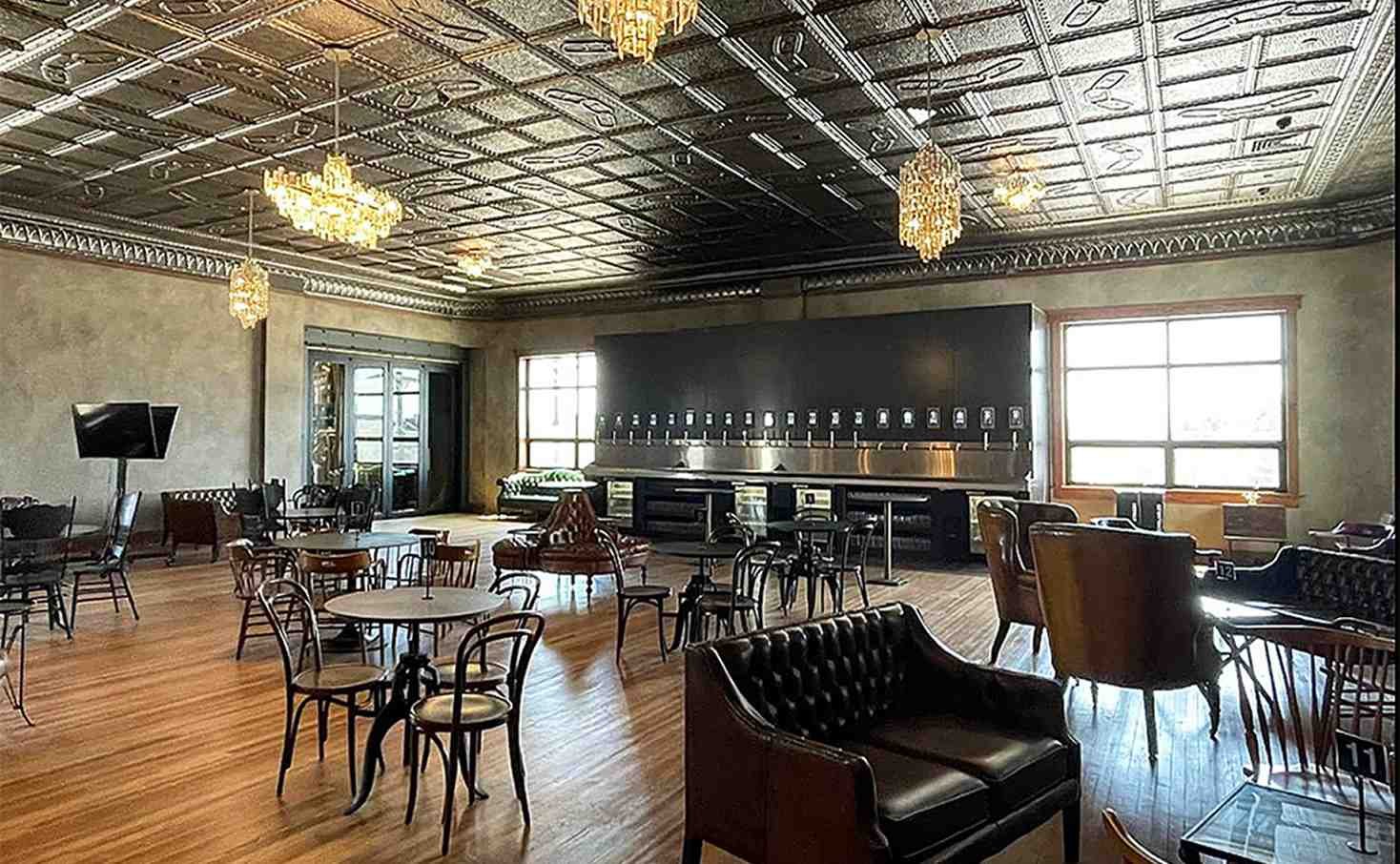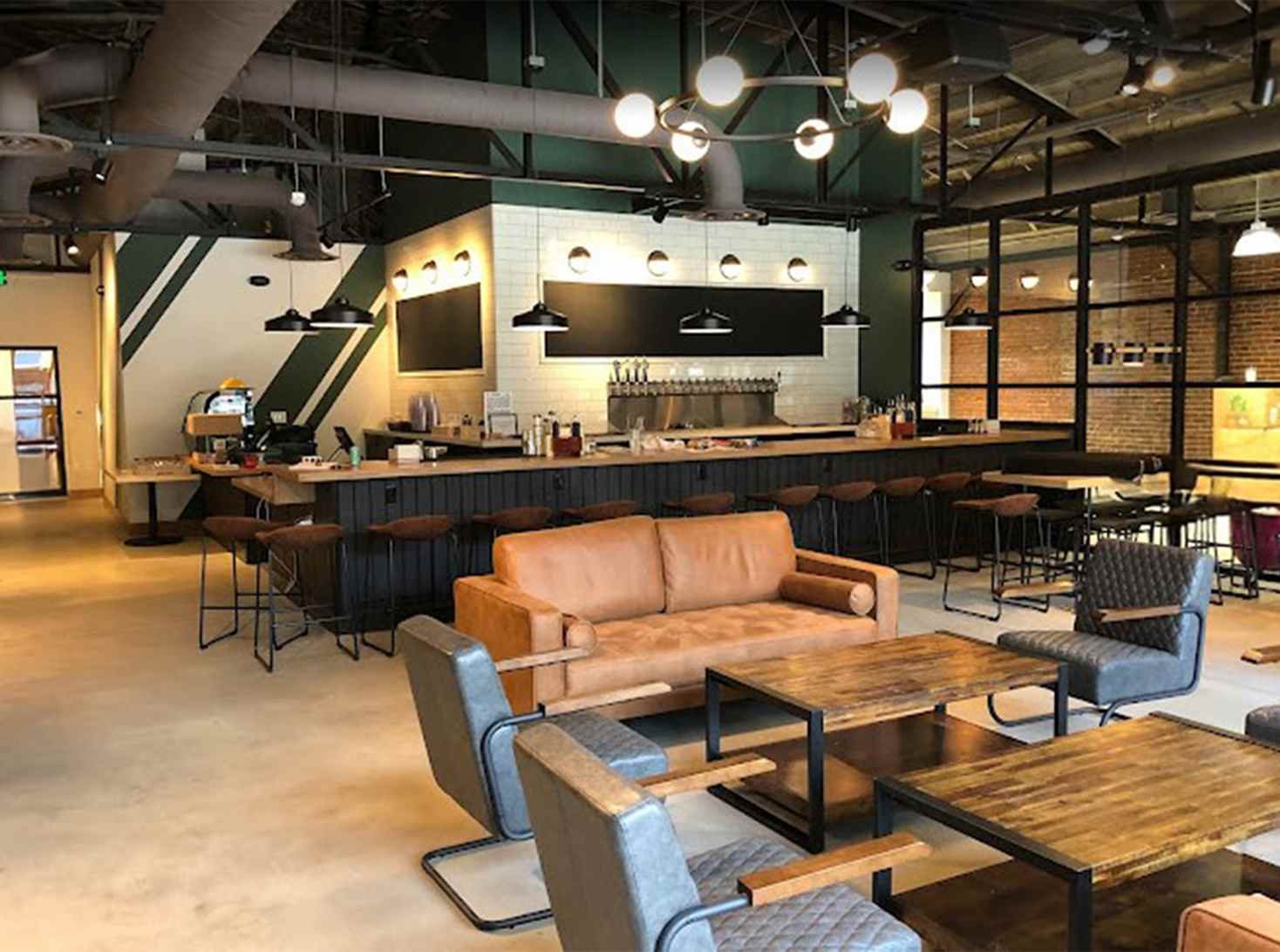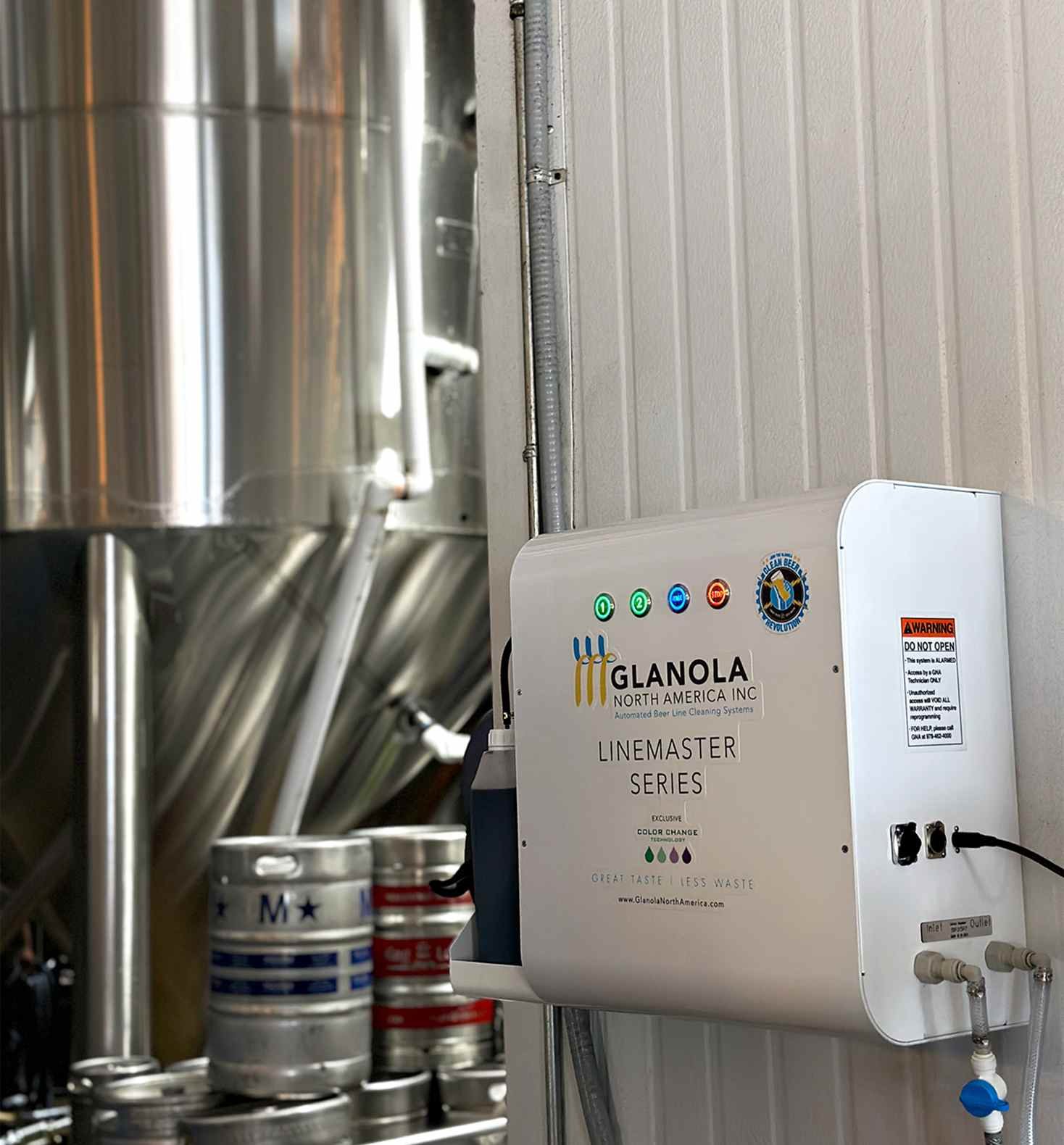How To Prep Your Space For A Tap Wall System Installation
A tap wall system is an innovative solution designed to transform the way you serve draft beer. It replaces traditional beer towers or counters with a wall-mounted tap, creating a sleek, space-efficient setup where beer is dispensed directly from the wall. This system is popular in home bars, restaurants, and craft beer bars, offering a self-serve experience that enhances both the drinking experience and the atmosphere.
The benefits of installing a wall-mounted beer tap system are significant. It maximizes space efficiency by eliminating the need for bulky beer towers or crowded counters. The self-pour setup allows patrons to access the taps directly, reducing wait times and improving customer satisfaction. This feature also helps manage high-volume traffic in busy settings. Additionally, a well-maintained draft beer system ensures beer quality by keeping the lines chilled and properly cleaned.
Draft Beer System: Understanding The Basics
A draft beer system allows beer to be served directly from a keg through components such as beer lines and taps, often including a beer tower or wall-mounted tap. Pressurized gas, typically CO₂, pushes the beer from the keg through the lines and out of the tap, ensuring a smooth pour. This system is commonly found in bars, restaurants, and home settings, offering fresh, cold beer on tap. With the rise of the self-serve model, many establishments are now opting for self-pour beer tap systems, allowing customers to pour their drinks.
Key Components of a Draft Beer System
To fully understand how a draft beer system works, it’s essential to know the key components that make it function:
Kegs: The vessels that hold the beer. They are typically made of stainless steel and come in various sizes. Kegs are connected to the rest of the system via the beer lines.
CO₂ Tanks: These tanks are used to provide the necessary pressure that pushes the beer through the beer lines and into the beer dispenser or beer tap. Proper CO₂ pressure ensures that the beer is dispensed at the correct rate and that it remains fresh.
Regulators: These are crucial for controlling the CO₂ pressure and maintaining the correct carbonation levels in the beer. Without the right regulator settings, you could end up with flat or overly foamy beer.
Cooling System: Often integrated into the draft system, the cooling system ensures that the beer remains at the optimal serving temperature. This is especially important for wall-mounted beer systems where beer lines may need to be chilled to prevent foaming and maintain freshness.
Beer Lines: These are the tubes that connect the kegs to the beer tap system, carrying the beer from the storage keg to the dispensing faucet. Properly cleaned and insulated beer lines are essential to maintaining beer quality.
Beer Taps: The faucets that allow the beer to be dispensed. These taps can be traditional beer tower faucets or wall-mounted beer taps for a more modern, space-saving look. The tap is typically where the beer meets the drinker.
Choosing the Right Draft Beer System for Your Space
Selecting the appropriate beer system for your space is crucial to ensuring a seamless and efficient operation. Here are some factors to consider:
Space Availability: For a smaller bar or home setup, a wall-mounted beer tap system may be ideal, as it saves counter space and provides a sleek, modern aesthetic. For larger bars or commercial spaces, a beer tower may be a better fit.
Beer Variety: Consider how many types of beer you plan to offer. The beer tap system should be able to accommodate the number of taps needed to serve your desired variety.
Beer Volume: If you expect high beer traffic, a larger keg capacity and a more robust cooling system will be required. For smaller volumes, a more compact setup may suffice.
Maintenance: Regular cleaning of beer lines and beer taps is essential for maintaining beer quality. Choose a system that makes it easy to access and clean components.
Preparing Your Space For Installation
Installing a draft beer system, especially a wall-mounted beer tap or a beer tap system, requires careful preparation of your space to ensure optimal functionality, safety, and efficiency. Before you dive into the installation process, take the time to evaluate the following critical aspects of your space.

Evaluating Your Available Wall Space and Structural Support
The first step in preparing your space is to assess the available wall space for installing a wall-mounted beer tap system. Since the system will be mounted on the wall, you need to ensure that the area is not only large enough to accommodate the beer dispenser but also structurally sound. Consider the following:
- Wall strength: Make sure the wall can support the weight of the beer system, including the beer tap unit, kegs, and any additional components such as CO₂ tanks. If necessary, reinforce the wall to avoid damage or instability.
- Space for multiple taps: If you're planning to install a self-pour system with several taps, ensure there’s enough room for easy access to each tap, as well as for maintenance and cleaning.
- Accessibility: Position the beer tap at a convenient height for your customers or guests to comfortably pour their drinks. Additionally, ensure that the surrounding area is clear of obstructions.
Ensuring Proper Ventilation and Temperature Control
Maintaining the ideal temperature for your draft beer is crucial for serving high-quality beer. A beer system needs to be cooled correctly to prevent temperature fluctuations that could affect the flavor and carbonation of your beer. Consider the following for optimal ventilation and temperature control:
- Ventilation: Ensure that the area around your wall-mounted beer system is well-ventilated, particularly if you're using a refrigeration system for the kegs. Adequate airflow will prevent overheating and improve system performance.
- Temperature control: Depending on your setup, you may need a cooling system to maintain the beer at the right temperature. For a self-serve or commercial system, you might opt for a glycol-cooled draft system, which ensures the beer stays chilled from the keg to the beer tap.
- Beer line insulation: If the beer lines are long or pass through areas with fluctuating temperatures, use insulation to maintain a consistent temperature throughout the system, reducing the risk of foamy or warm pours.

Considering Drainage and Spill Management
Spills and overflows are inevitable when working with a beer dispenser or beer tap, so planning for drainage is a must. Without proper drainage, spills could lead to a slippery or unsanitary environment. Here are a few key considerations:
Drip trays: Install drip trays under each beer tap to catch any excess beer that might spill during pours. These trays should be easily removable and cleaned regularly.
Drainage system: If possible, position the tap area over a drain to allow for any beer spills or condensation to be easily drained away. If this isn’t possible, ensure that the area is cleaned frequently to prevent sticky buildup and odors.
Flooring: Choose a flooring material that’s easy to clean, non-slip, and resistant to water damage. Tiles, sealed concrete, or rubber mats are ideal choices for areas around the beer tap system.
Compliance with Local Health and Alcohol Service Regulations
When installing a draft beer system in a commercial setting such as a bar, you must comply with local health, safety, and alcohol service regulations. Be sure to consider the following:
Health codes: Check with local authorities to ensure that your beer system complies with food safety and hygiene standards, especially when it comes to beer lines and taps. Cleanliness is essential for preventing contamination and maintaining beer quality.
Alcohol service laws: Make sure you understand local licensing laws regarding the self-serve self-pour model, as some regions may have restrictions on serving alcohol in this manner. Be aware of age verification methods and the legalities surrounding self-service systems.
Beer storage: Ensure that your kegs are stored in a safe and sanitary manner, keeping in mind any local regulations about beer storage and temperature control.
Beer Lines: Planning Your Draft Beer Flow
When setting up a draft beer system, one of the most critical components is the beer lines. These lines carry the beer from the keg to the beer tap and play a vital role in maintaining the freshness and quality of your draft beer. Proper planning and selection of beer lines will ensure a smooth, foamy-free pour and a high-quality beer experience every time.
Importance of Selecting High-Quality Beer Lines for Maintaining Freshness
The beer lines are the direct connection between your keg and the beer dispenser, so it’s crucial to invest in high-quality materials to preserve the flavor and freshness of your beer. Poorly constructed or low-quality lines can lead to off-flavors, contamination, or even damage to your beer. Here’s why the quality of your beer lines matters:
Material choice: Select beer lines made from durable, food-grade materials such as PVC or Ethanol-resistant rubber. These materials are resistant to wear, temperature fluctuations, and contamination, ensuring your beer stays fresh and free from any unwanted flavors.
Preventing contamination: Low-quality lines may introduce contaminants or absorb unwanted flavors, which can affect the taste of your draft beer. Investing in high-quality lines minimizes this risk and keeps the beer tasting as it should.
Durability and longevity: Strong, well-constructed lines withstand the rigors of frequent use, reducing the need for regular replacements and minimizing maintenance efforts.
Determining Optimal Beer Line Length and Routing
Once you’ve chosen your beer lines, determining the right length and routing is crucial for an efficient system. Proper setup prevents foaming, inconsistent pours, and carbonation loss. Consider the following factors:
Beer line length: The ideal length depends on the distance from the keg to the tap. Longer lines can cause over-carbonation or foaming, while shorter lines may lead to under-carbonation. Aim for a balance that maintains cooling and pressure without excessive resistance.
Beer line routing: Avoid sharp turns, kinks, or bends that can restrict flow, especially in wall-mounted tap systems. Proper routing ensures smooth, consistent pours.
Temperature control: Keep beer lines cool to maintain ideal pouring conditions. Insulating the lines or using a glycol-cooled system helps prevent temperature fluctuations that can affect beer quality.
Preventing Foaming and Contamination Through Proper Line Cleaning and Maintenance
Even the best beer system can suffer from poor quality if the lines aren’t properly maintained. Regular cleaning keeps draft beer fresh and prevents issues like foaming, contamination, and off-flavors. Here are some essential tips:
- Regular cleaning: Clean beer lines every 2-4 weeks to remove yeast, bacteria, and residue that can create off-flavors. Use a specialized cleaning solution for thorough sanitation.
- Avoid contamination: Use proper tools, such as brushes and line cleaning systems, to remove buildup. Poor cleaning can lead to contamination that affects both beer taste and safety.
- Foaming prevention: Dirty lines or incorrect CO₂ pressure can cause foaming. Regular cleaning and proper pressure settings help maintain carbonation and a smooth pour.

Draft Beer Storage And Cooling Requirements
Proper storage and cooling are essential for serving high-quality draft beer. Maintaining the right temperature and conditions preserves flavor, carbonation, and freshness, whether at home, in a bar, or a self-serve setup. Here’s what you need to know about draft beer storage and cooling.
Choosing the Right Location for Kegs and Refrigeration
Selecting the right location for your kegs and refrigeration system is essential for a functional draft beer setup. The placement affects performance, pour consistency and beer quality. Consider these factors:
Keg placement: Store kegs in a cool, dry area to maintain freshness. Use a beer refrigerator or tower to keep them at the correct temperature. For wall-mounted tap systems, place kegs nearby, ideally at or below tap level for optimal flow.
Refrigeration systems: Choose a unit suited to your beer volume. A commercial-grade cooler or walk-in fridge is ideal for high demand, while a dedicated beer fridge works for smaller setups. Ensure easy access for keg changes and stock monitoring.
Layout considerations: In self-pour systems, position the dispenser and beer lines for easy access without interfering with bar operations. Maintain proper line distances for a smooth pour.
Understanding the Role of Glycol Cooling Systems in Maintaining Ideal Beer Temperature
Maintaining the ideal beer temperature is essential for preserving taste and texture. A glycol cooling system is one of the most effective ways to keep beer cold from the keg to the tap. Here’s how it works and why it matters:
Glycol cooling system: This system circulates a glycol mixture through a refrigerated chiller to maintain a consistent beer temperature, even during busy service hours. It prevents beer from warming up in the lines, which could cause off-flavors, flat pours, or foaming.
Consistent pouring: Glycol cooling ensures beer remains cold throughout the pouring process, especially in wall-mounted tap systems where longer lines are more prone to temperature fluctuations.
Preventing over-carbonation: Warm beer lines can lead to excessive carbonation, causing foamy pours and flavor loss. A glycol system regulates temperature, keeping carbonation stable for a perfect pour every time.
Preventing Temperature Fluctuations for Consistent Pour Quality
Temperature control is essential for maintaining consistent pour quality in any draft system. Here are strategies to prevent fluctuations:
Insulated lines: Insulating longer beer lines prevents external temperature changes from affecting the beer, maintaining its optimal serving temperature.
Proper storage: Store kegs between 34°F and 38°F (1°C and 3°C) to keep beer cold without over-chilling, which can impact flavor and carbonation.
Avoid heat sources: Keep kegs and beer lines away from heat sources like ovens, radiators, or direct sunlight to prevent temperature-related pour issues.
Installing A Wall Mounted Beer Tap System
Installing a wall-mounted beer tap system optimizes space and creates a sleek, modern setup. Whether for a bar, self-serve station, or home bar, proper installation ensures durability, ease of use, and a perfect pour. Here’s a step-by-step guide to configuring, mounting, connecting, and adjusting your system.

Selecting the Right Tap Configuration
When installing a wall-mounted beer tap system, choosing the right tap configuration is crucial. The number of taps and their spacing impact functionality, aesthetics, and flow. Consider the following:
- Number of taps: Determine how many beer types you plan to serve. For a self-pour setup, more taps allow customers to choose without waiting.
- Spacing between taps: Proper spacing (around 3-4 inches) ensures easy access and prevents tangled beer lines.
- Aesthetics and design: Choose a tap style that complements the space’s vibe, whether minimalist, industrial, or vintage, to align with your brand or personal aesthetic.
Properly Mounting Taps to Ensure Durability and Ease of Use
Once you’ve selected the right configuration, it’s time to mount the beer taps securely for durability and ease of use. Follow these guidelines for proper mounting:
- Wall reinforcement: Ensure the wall is strong enough to support the beer system, especially if using multiple taps or a heavy-duty dispenser. Reinforce the wall as needed, particularly for setups with weight from lines and kegs.
- Height and accessibility: Position the taps at an ergonomic height, making them accessible for bartenders or customers in a self-pour setup. Adjust the height based on your needs—slightly higher for larger volumes or lower for home use.
- Securing the taps: Use sturdy mounting brackets and screws specific to your tap system, ensuring a firm installation to prevent wobbling and ensure smooth pouring.

Connecting Beer Lines to Kegs and Ensuring Proper Pressure Settings
Once the taps are securely mounted, the next step is to connect the beer lines to the kegs and set the proper pressure for optimal flow and quality. Here’s how to do it right:
Beer line connections: Attach the beer lines to the keg couplers, ensuring secure, leak-free connections. Use the correct fittings for the keg type (e.g., D-system, S-system, or U-system). Insulate the lines if needed to maintain the proper temperature.
CO₂ pressure settings: Adjust the pressure based on the beer style, as different beers require varying carbonation levels. The ideal range is typically 8-14 PSI, but this may vary by system and beer type.
Line length and beer flow: Ensure the beer line length matches the distance between the kegs and taps. Lines that are too long slow the pour, while short lines can cause excessive foam. Adjust as needed for smooth flow and consistent temperature.
Final Testing and Adjustments for a Perfect Pour
After everything is connected, test the system and make final adjustments for the perfect pour. This ensures the beer tap system functions properly and dispenses beer as expected:
Test each tap: Turn on each tap to check the flow. Ensure smooth pouring without excessive foam or hesitation. If the pour is too foamy, adjust pressure or clean the lines; if too slow, check CO₂ pressure or line blockages.
Inspect for leaks: Check all connections for leaks. Tighten any loose fittings to prevent wastage and ensure efficient operation.
Final adjustments: Fine-tune pressure settings and beer lines to ensure consistency. After a few test pours, adjust to achieve the right balance between carbonation and pour speed.
Maintenance And Best Practices Post-Installation
Once your wall-mounted beer tap system is installed, proper maintenance is essential for longevity and consistent pour quality. Regular upkeep prevents issues like foamy pours or off-flavors and keeps your system running smoothly. Here are key maintenance tasks and best practices to follow.

Regular Cleaning and Sanitization of Beer Lines and Taps
The most critical aspect of maintaining a beer system is regular cleaning and sanitization of the lines and taps. Over time, yeast, bacteria, and residue can accumulate, leading to off-flavors, clogging, or contamination. Proper cleaning preserves beer quality and prevents issues.
- Clean beer lines regularly: Clean beer lines every 2-4 weeks, or more often if the system is heavily used. Use a cleaning solution designed for draft systems to prevent bacteria and yeast buildup that can affect beer taste.
- Clean the taps: Regularly clean the taps to remove beer residue and wipe down handles to keep them sanitary. Use a non-abrasive cleaner to avoid damaging the tap finish.
- Sanitize after each keg change: Sanitize the system when replacing a keg to prevent cross-contamination and maintain each beer's distinct flavor.
- We recommend the Glanola Automated Beer Line Clean System for its ease of use and cost-saving benefits. With a user-friendly interface, employees can initiate the cleaning process with just the push of a button. Unlike manual line cleaning, the Glanola system ensures that every drop of beer in the lines is utilized, reducing waste. This makes Glanola not only simple and cost-effective but also effortless to operate.
Monitoring CO₂ Levels and Adjusting Pressure Settings as Needed
Proper CO₂ pressure settings are crucial for serving great draft beer. Incorrect pressure can cause over-carbonation, under-carbonation, or inconsistent pours. Monitoring and adjusting CO₂ levels is essential for system maintenance.
Monitor CO₂ levels: Regularly check the CO₂ tank to ensure it's full and functioning properly. Low CO₂ can cause a flat pour, while excessive CO₂ can lead to foam. Maintain the recommended pressure for each beer type.
Adjust pressure settings: Adjust pressure based on beer style—lighter beers (like lagers or pilsners) typically require 8-10 PSI, while stouts and porters need 12-14 PSI. Follow the manufacturer's recommendations for each beer type.
Check for leaks: Inspect beer lines and CO₂ connections for leaks, which can drop pressure. Tighten any loose fittings to maintain stable pressure.
Troubleshooting Common Issues Like Foamy Pours or Off-Flavors
Even with regular maintenance, issues like foamy pours, off-flavors, or inconsistent beer flow can arise. Here's how to troubleshoot common problems:
Foamy pours: Too much foam could be due to incorrect CO₂ pressure, over-carbonation, or dirty beer lines. Check and adjust the pressure, then inspect the lines for blockages, leaks, or contaminants.
Off-flavors: Off-flavors may result from contamination, improper temperature control, or poor storage. Ensure beer lines are clean, kegs are stored at 34°F-38°F and are properly sealed and not expired.
Slow pour or inconsistent flow: This can be caused by long or poorly insulated lines, a clogged tap, or incorrect pressure. Inspect the lines for kinks, clean the tap, and adjust CO₂ pressure if needed.
Successfully installing a wall-mounted beer tap system requires careful planning, from evaluating space and selecting the right system to mounting taps, connecting beer lines, and testing pour quality. Regular maintenance, such as cleaning lines and monitoring CO₂ levels, ensures high-quality beer and prevents issues like foamy pours or off-flavors. While DIY installation works for smaller setups, professional assistance is recommended for complex commercial or self-serve systems. A well-maintained draft system enhances beer quality and provides a better experience for customers and staff, making it a valuable investment for any venue.
